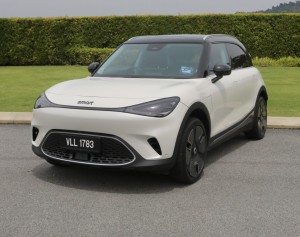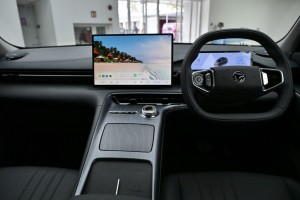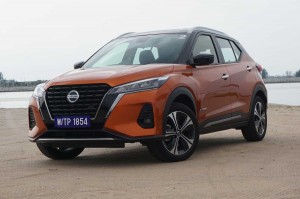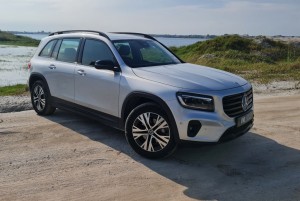PETALING JAYA: As more electric vehicles (EVs) are sold in Malaysia, a pivotal question emerges: Are consumers ready to embrace this shift amid broad changes in fuel subsidies and electricity pricing?
The government’s decision to rationalise fuel subsidies, targeting assistance primarily to the economically vulnerable bottom 40 (B40) demographic, is a pivotal change that may alter consumer preference across the automotive sector.
At the same time, Tenaga Nasional Bhd (TNB) has announced adjustments to electricity tariffs, but the impact on domestic consumers will be somewhat mitigated. This is because those using less than 600 kilowatt-hour (kWh) per month will continue to benefit from a rebate of two sen per kWh.
Consumers who use between 601 and 1,500kWh per month will no longer get to enjoy the rebate, which could lead to an increase in their electricity bills.
This group will now need to manage higher costs, which could influence their decision-making regarding high-energy-consuming appliances and technologies, including EVs.

Kee.
These economic adjustments arrive at a time when the global automotive industry is pushing towards electrification, a move mirrored by local players and international brands operating in Malaysia.
Yet, the readiness of Malaysian consumers to switch to EVs hinges not only on fuel and electricity costs, but also on broader concerns such as safety and most importantly, the total cost of ownership.
Safety concerns, particularly regarding accidents involving the large batteries that power EVs, are notable.
These batteries, often as large as the vehicle’s base, pose a unique risk in high-impact collisions, potentially leading to total losses that are costly to insure and replace.
Moreover, the total cost of ownership of EVs – factoring in the purchase price, maintenance, insurance, and now, electricity costs – remains a significant consideration.
While EVs promise lower running costs and reduced maintenance, the high upfront cost and potential future battery replacement expenses contribute to consumer hesitation.
Resale value
Carsome group chief business officer Aaron Kee suggests that, despite facing initial challenges such as depreciation and higher upfront costs, there is optimism in the EV market.
“While reports indicate that premium EV brands generally maintain better resale value, the current price war between manufacturers has disrupted this trend, leading to a lower general resale value than that of traditional internal combustion engine (ICE) vehicles.
However, we view this as more of an evolution than a decline and believe that EVs’ current lower resale value may improve in the long run,” he explains in a reply to StarBizWeek.
Kee says several key factors, including government incentives, advancing battery technology and the rising demand for sustainable transportation, will contribute to an increase in resale value over time.
Kee adds that the EV market may see an upward trend in resale values as it matures and consumer preferences continue to shift towards eco-friendly options.
“With a more mature market and the potential end to the price war between manufacturers, we anticipate improvements in the resale value of EVs,” he adds.
Meanwhile, veteran automotive industry journalist Yamin Vong acknowledges that globally, EV resale values are dismal, except for Tesla in the United States, where resale values have held up.
“In Malaysia, EV sales only started in earnest last year but the EV car salesmen generally perceive that resale value of EVs are lower than their combustion rivals,” he says.

When asked how often EV owners typically need to replace their batteries and what costs are associated, Kee explains that the lifespan of EV batteries varies based on factors such as battery type, driving habits and environmental conditions.
Generally, he says EV batteries last several years, with most manufacturers offering warranties that range from eight to 10 years.
Kee points out that while replacing a battery can be a significant expense – often amounting to tens of thousands depending on the vehicle – manufacturers are innovating to alleviate these costs.
“Nio, a prominent player in the EV industry, for example, is spearheading the establishment of battery swap stations, a growing trend in China. Customers can opt to own a battery or rent it, which leads to a significant reduction in purchase cost,” he says.
Kee also points out that beyond China’s innovations, South-East Asian companies are adopting similar strategies to manage battery costs.
He says manufacturers in the region, including Vietnam’s VinFast, are introducing battery leasing programmes.
“VinFast, an EV player from Vietnam, has a battery subscription programme in which the company is willing to replace batteries that have degraded to about 70% of their original capacity. This makes it more attractive for EV owners who do not want to worry about battery degradation or bear the cost of replacing their own batteries,” he notes.
Similarly, Vong emphasises the substantial cost of EV batteries, which can represent up to 40% of the vehicle’s total price.
He highlights how this significant expense influences the resale value of EVs.
Reflecting a shift in industry practices, Vong points out that manufacturers are increasingly offering longer warranties, typically extending up to eight years.
“So that’s why more and more car companies are now offering an eight-year warranty on traction batteries, one-on-one exchange if the state of health falls below 70%,” he notes.
Maintenance and savings
Shifting the focus to maintenance, both industry experts emphasise the significant advantages of EVs over ICE vehicles.
Kee notes that EVs require less frequent maintenance due to having fewer mechanical parts – less than 20 compared to hundreds in ICE vehicles.
“EVs eliminate the need for oil changes, spark plugs and timing belts, saving money and time. Maintenance for EVs primarily involves brake pads, tires and eventually battery replacement,” he points out.
Vong, meanwhile, also underscores the cost-effectiveness and ease of maintaining EVs.
He contrasts this with the routine checks required for ICE vehicles, like checking coolant and oil levels, which are not necessary with EVs.
The only common maintenance tasks he highlights for both EVs and ICE vehicles involve checking the tire pressure and refilling the windscreen washer fluid.
This simplification in maintenance routines not only makes EVs cheaper to maintain, but also less cumbersome for vehicle owners.
On the topic of cost savings, Kee highlights the potential financial benefits of EV ownership.
He points out that beyond fuel economy, the minimised maintenance needs and the mechanical simplicity of EVs can lead to substantial savings.
“Beyond the benefits of fuel economy, our analysis indicates substantial savings through minimised maintenance requirements, such as reduced need for oil changes and spark plug replacements, as well as the mechanical design of EVs. All these could mean savings of tens of thousands over the long run for EV owners,” Kee notes.
Kee also points to impending changes in fuel subsidies and the increasing cost of fuel which could drive more consumers toward EVs.
Additionally, he believes government incentives like tax credits and rebates further augment the affordability of EVs.
Kee also highlights the environmental benefits of EVs such as zero tailpipe emissions and reduced greenhouse gas emissions, which align with global sustainability goals.
“While considerations around initial depreciation persist, ongoing innovations in battery technology and the growing demand for eco-conscious transportation signal promising avenues for enhanced value retention, further highlighting the compelling advantages of EV ownership in the coming years,” he says.
Vong, meanwhile, opines that the cost of charging an EV at home is generally much cheaper than fuelling an ICE vehicle.

Currently, EV owners enjoy a full road tax exemption in Malaysia until the end of 2025, as part of governmental support for sustainable transport initiatives.
After this period, a revised road tax structure for EVs, anticipated to be more favourable than that for ICE vehicles, will be implemented. This change is expected following a review set to conclude by the end of April 2024.
Although specific details of the new road tax structure for EVs have not yet been announced, Vong advocates for a holistic approach.
“When reviewing the structure of the annual road tax for vehicles in Malaysia to differentiate between zero-emission EVs and ICE vehicles, the aim should be to promote environmentally friendly transportation options, especially EVs,” he says.
Vong points out the long-term inevitability of adopting EVs and the associated changes in infrastructure.
“The rollout of a new road tax structure is inevitable due to the rise of EVs, but it will likely take between 10 and 20 years before the charging infrastructure is fully mature. The government might want to consider introducing a comprehensive new road tax structure on a longer timeline, rather than lumping everything in January 2025 as scheduled,” he adds.
Vong also highlights a significant difference in how countries generate transportation revenue.
“Unlike Malaysia, where road tax is a major source of revenue, China does not levy an annual road tax. Instead, it collects taxes on fuel and tolls from highways, which are owned by provincial governments,” he says.
All in all, Malaysia’s shift towards EVs is shaped by both challenges and opportunities.
The transition, supported by governmental incentives and policies, aims to make EVs a viable and environmentally friendly option for consumers.
As the nation moves forward, a balanced approach involving supportive policies, consumer readiness and enhanced infrastructure is essential in fostering sustainable transportation. — KIRENNESH NAIR












